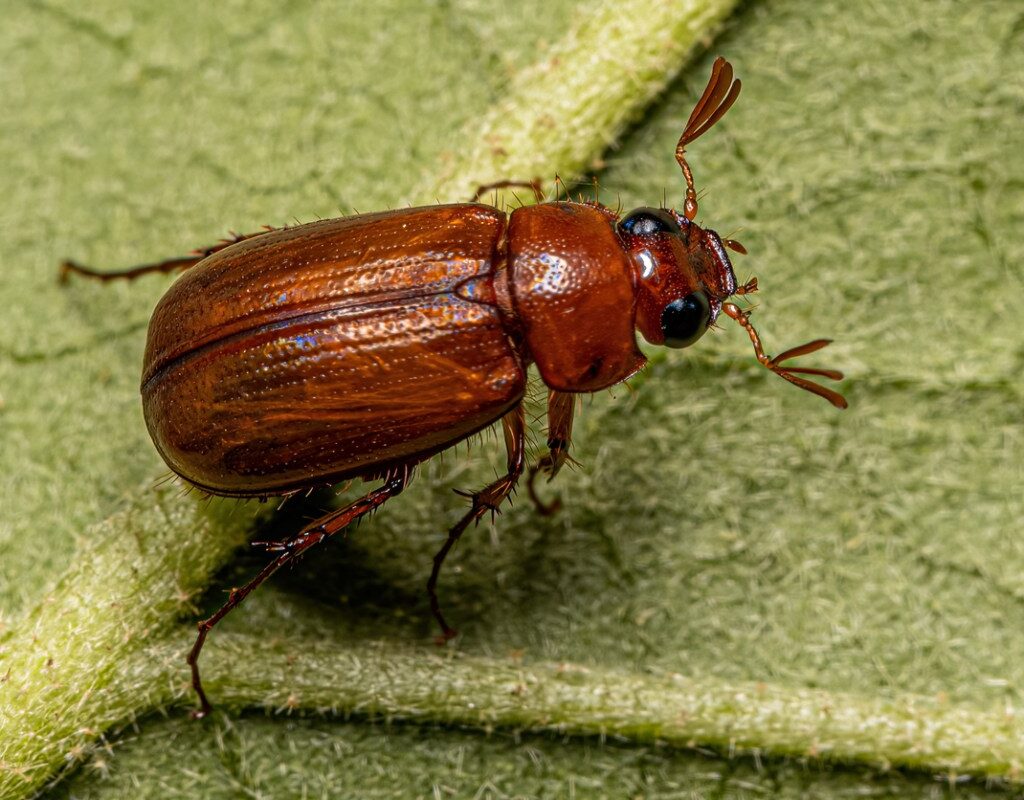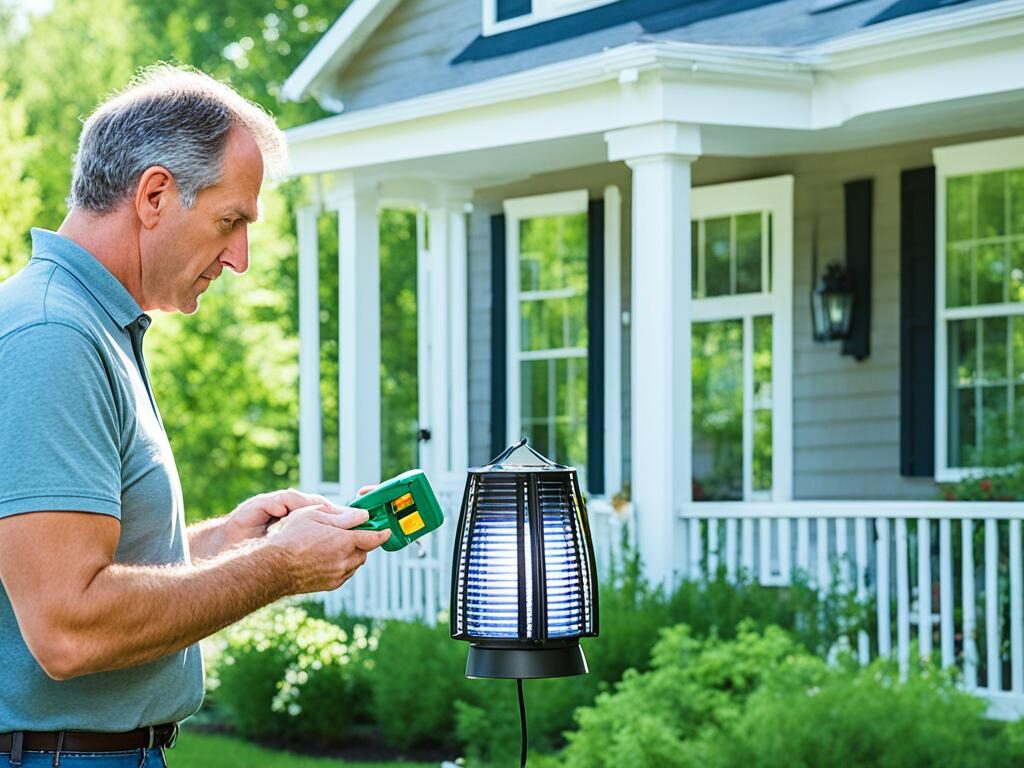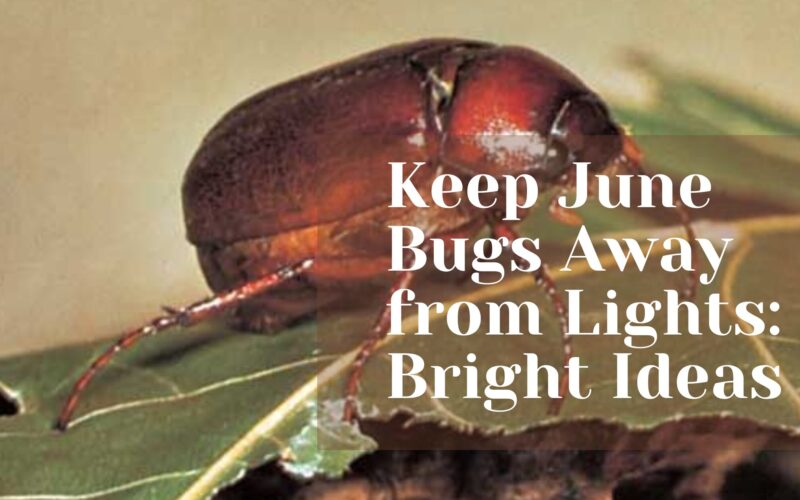Ever wonder why your porch light turns into a beetle disco every summer? You’re not alone in fighting these night bugs. June bugs, those red-brown beetles, seem to find every light near your home.
But don’t worry, we have some bright ideas to keep June bugs away and enjoy your evenings again.These small pests, about 0.5 to 1 inch long, love to ruin your summer nights. They seem to enjoy your outdoor lights.
But how can you stop them? We’ll look at ways to keep them away, from smart deterrents to choosing the right lights. Ready to end the June bug party? Let’s find out how to keep these pests away!
Understanding June Bugs and Their Attraction to Light

June bugs can be a real problem when they gather around your outdoor lights. To stop them, it’s important to know about these insects and how they act.
June bugs are part of a big family of beetles, with over 260 types found all over the world. They are usually 1/2 to 1 inch long and can be green, brown, or red. Despite their short adult life, they live longer as larvae underground.
Why are June Bugs Attracted to Lights?
June bugs are drawn to light because it helps them navigate. They see light in the range of 300-650 nanometers. So, they gather around bright areas like porches and lights. This disrupts their natural behavior, making them a nuisance near homes.
The Life Cycle of June Bugs
June bugs go through a life cycle that can last up to three years. Female beetles lay 60–75 eggs in the soil in the early summer. The larvae, or white grubs, eat underground for 9–10 months. Then, they pupate before emerging as adults in late spring or early summer.
Knowing this cycle helps us avoid attracting them with light.”Nature’s nocturnal navigators, June bugs, remind us that even the smallest creatures can have a big impact on our summer evenings.”
The Impact of June Bugs on Your Home and Garden
June bugs can cause big problems for your property. They lead to damage and disturb you. It’s important to know how they affect your home and garden for better control.
Damage to Lawns and Plants
These beetles lay up to 200 eggs in the soil. This leads to a grub infestation that can destroy your lawn. Look out for signs like:
- Brown patches of dead grass
- Small dirt mounds
- Nibbled plants and leaves
Nuisance Factor: Noise and Intrusion
At night, June bugs become a big problem. They are drawn to light and come to your porch and windows. This makes a lot of noise as they hit things.
“It’s like a tiny, clumsy air force invading your space every night!”
Even though June bugs don’t bite or sting, they can be annoying. They might fly into your hair or clothes, which can surprise you and your guests. Good June bug light management helps you enjoy your outdoor spaces again.
How to Keep June Bugs Away from Lights
Are June bugs ruining your outdoor fun? Discover how to keep them away with smart June bug porch light protection tips. Enjoy bug-free evenings with these simple steps!
Change Your Light Bulbs
Try new light bulbs to outsmart June bugs. Yellow or orange LED bulbs are great for this. They don’t attract June bugs as much because they don’t match the bugs’ preferred light spectrum.
Use Light Timers and Motion Sensors

Set your lights to turn on an hour after sunset. This can help reduce bug attraction. Adding motion sensors is also a good idea. They turn lights on only when needed, confusing the June bugs.
Install Bug Screens
Put up screens around your porch or lights to keep bugs out. This method is very effective in reducing June bug problems. It lets you enjoy your outdoor lights without bugs.
“An ounce of prevention is worth a pound of cure when it comes to June bugs and outdoor lighting.”
Keep your porch clean and remove standing water to help keep June bugs away. With these tips, you’ll have bug-free summer nights to enjoy!
Natural Repellents for June Bugs
Want to keep June bugs away without harsh chemicals? Nature has many effective ways to do this. These methods will make your outdoor spaces less welcoming to these bugs.
Make a homemade spray to keep June bugs away using dish soap and water. Spray it around your lights for great results. Or, try essential oils like eucalyptus, lemongrass, or citronella mixed with water or vinegar. This smells nice and keeps June bugs away too!
If you like gardening, plant garlic around your garden. Garlic is a natural repellent for June bugs. Plus, you’ll have fresh garlic for cooking.
“Nature provides a solution for every pest. For June bugs, it’s all about harnessing the power of scents they can’t stand.”
Feeling crafty? Try making DIY traps with yeast, molasses, and water. Or, use a jar of vegetable oil. These traps attract June bugs, offering a chemical-free way to control their numbers.
- Use diatomaceous earth in outdoor areas
- Maintain your lawn at 3 inches during June bug season
- Irrigate your lawn frequently in late June
Remember, June bugs are part of nature. Using these natural repellents helps protect your property and supports a balanced ecosystem in your backyard.
Creating an Unfavorable Environment for June Bugs
Want to keep those pesky June bugs away? Let’s make your yard a June bug-free zone! By changing your landscape and lawn care, you can make your outdoor space less welcoming to these bugs. We’ll also look at how to attract natural bug-fighters to help prevent June bug problems.
Landscape Modifications
Change your garden to keep June bugs away. Avoid plants they like, such as apple trees, cherry blossoms, and grape vines. Choose plants that are less appealing to them instead. This change can greatly help in avoiding June bug lights.
Proper Lawn Maintenance
Keep your lawn looking great to deter June bugs. Mow regularly and don’t overwater. A well-kept lawn is less appealing to grubs, which are young June bugs. A healthy lawn is key in preventing June bug problems.
Encouraging Natural Predators
Bring in nature’s bug fighters to your yard. Birds, frogs, and toads enjoy eating June bugs. Set up bird feeders and birdbaths to draw in birds. Create places with logs and plants for amphibians. These natural helpers will help control June bug numbers, supporting your efforts to avoid June bug lights.
“Nature does not hurry, yet everything is accomplished.” – Lao Tzu
By using these eco-friendly methods, you’re not just stopping June bug infestations. You’re creating a balanced, healthy ecosystem in your yard. It’s good for you and the planet!
Chemical Solutions and Insecticides
Hey there, lawn enthusiasts! It’s time to get serious with your june bug light control. While natural methods work well, sometimes you need more to keep these bugs away. Let’s explore some chemical solutions that’ll help you out.
Targeted Insecticide Applications
Timing is crucial when fighting june bugs. Apply insecticides in late summer or early fall when grubs are most exposed. Products with Chlorantraniliprole, Trichlorfon, or Imidacloprid can be very effective. But remember, these are strong insecticides. Use them carefully and follow the instructions closely.
Beneficial Nematodes for Grub Control
For a greener approach, consider beneficial nematodes. These tiny worms attack June bug grubs without harming your lawn or other insects. They’re safe for pets and kids too. It’s like having an underground army fight for you while you enjoy your bug-free nights.
Using chemical insecticides or beneficial nematodes requires consistency in your june bug control plan. With persistence and the right tools, you can take back your outdoor space from these pests. Now, go ahead and enjoy bug-free nights under your lights.
Summing up
In the battle against June bugs, these strategies offer your porch a peaceful retreat once more. By choosing the right lights, embracing natural repellents, and inviting nature’s allies, you’re not just keeping bugs at bay—you’re reclaiming your outdoor sanctuary for tranquil summer evenings under the gentle glow.
Consider incorporating plants known for their bug-repelling properties along your porch, such as lavender, citronella, or marigolds. These not only enhance your outdoor space aesthetically but also act as a natural deterrent to those pesky June bugs.
Additionally, maintaining a clean and clutter-free porch can limit the hiding spots of these intruders, making it less inviting for them to set up camp near your living space.”
